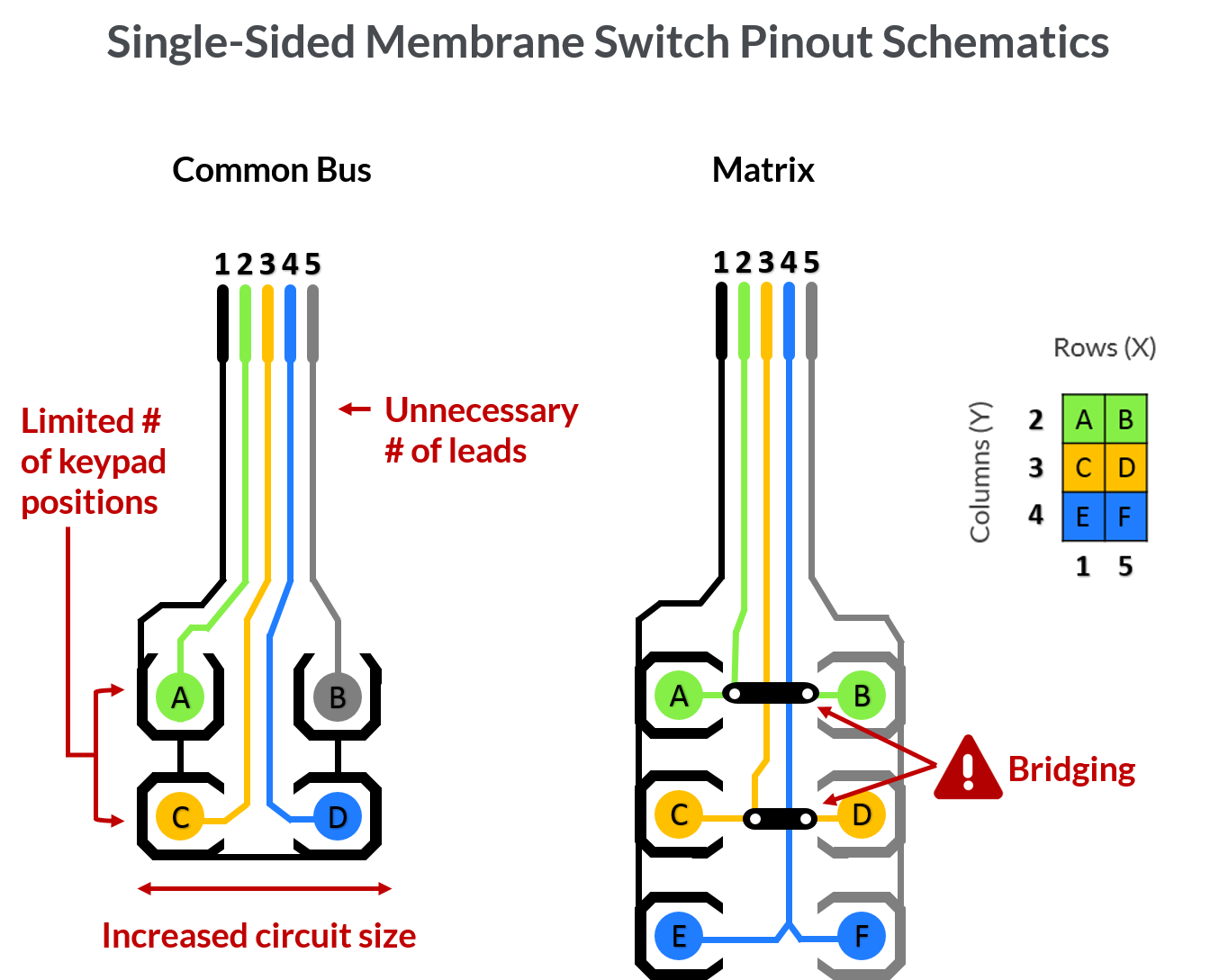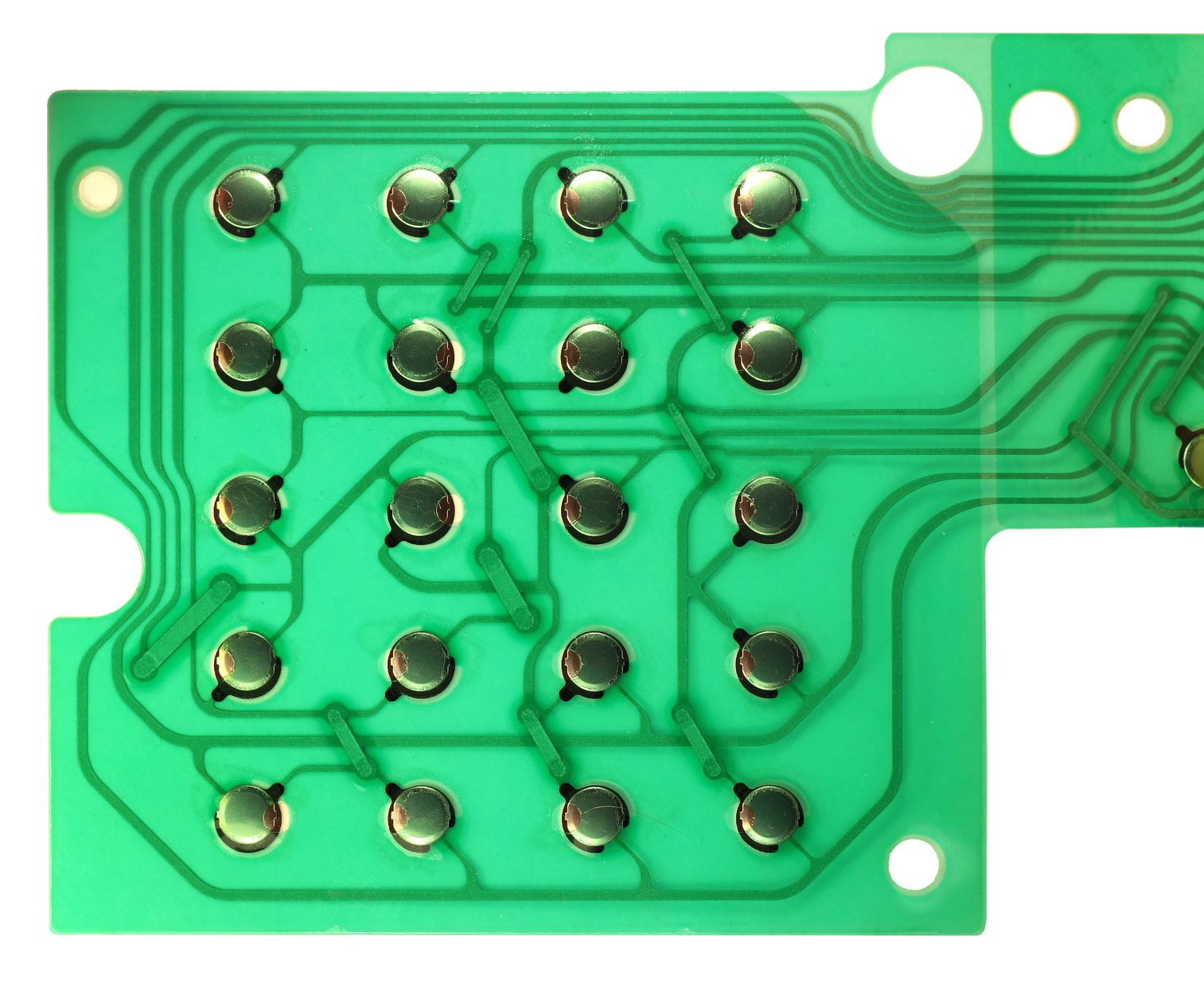Leading Advantages of Incorporating a Membrane Switch Into Your Digital Tools
Leading Advantages of Incorporating a Membrane Switch Into Your Digital Tools
Blog Article
Exactly How Membrane Layer Changes Add To the Longevity of Electronic Control Panels
Membrane buttons play a critical duty in improving the toughness of electronic control panels, primarily via their multi-layered building which provides efficient defense versus environmental elements such as wetness and dust. This layout not just lessens the risk of circuit damages and corrosion however likewise promotes ease of upkeep as a result of its smooth surface. Moreover, the lack of moving components dramatically decreases the possibility of mechanical failures, making membrane layer changes ideal for demanding applications. However, the implications of these features expand beyond simple security, questioning concerning their wider effect on capability and individual experience.
Interpretation of Membrane Switches

Membrane layer buttons are designed to be thin and lightweight, making them ideal for applications where room is restricted. They can be produced in various shapes, sizes, and shades, offering versatility in design that satisfies visual and functional demands. Furthermore, membrane layer switches can integrate different modern technologies, such as tactile comments and LED indicators, enhancing user experience.
Due to their building and construction, membrane switches are often immune to dirt, dampness, and general wear, adding to their toughness popular settings. Their smooth layout not just promotes very easy cleansing however also lessens the risk of mechanical failure, making them a preferred option for producers seeking trusted customer interfaces in their electronic control board.
Defense Versus Environmental Variables
The design of membrane layer changes inherently gives a level of protection versus different ecological variables, which is essential for maintaining capability in difficult problems - Membrane Switch. These switches are usually constructed with layers of flexible materials that protect inner parts from moisture, dust, and pollutants. By enveloping the circuitry, membrane switches decrease the threat of short circuits and deterioration, which can dramatically harm performance
Additionally, the use of durable adhesives and sealants during production boosts their resistance to environmental obstacles. Membrane layer switches can sustain direct exposure to chemicals and solvents, making them appropriate for sectors such as food handling and medical care, where hygiene and sanitation are extremely important. Their seamless surface area style likewise prevents the build-up of dust and microorganisms, promoting less complicated cleaning and maintenance.
Temperature level fluctuations are another environmental concern, and membrane switches are crafted to work properly across a large array of temperature levels (Membrane Switch). This adaptability guarantees that control panels stay operational in various settings, from commercial settings to customer electronics
Influence On User Communication
Individual interaction with digital control board is dramatically influenced by the style and capability of membrane layer switches. These buttons give a tactile user interface that enhances the overall user experience, enabling intuitive navigation and control. Their receptive nature ensures that users receive instant comments upon activation, which is essential for tasks needing precision and efficiency.
In addition, the smooth surface of membrane switches over Find Out More assists in simple cleansing and upkeep, advertising user self-confidence in the dependability of the interface. This tidiness is particularly vital in settings where health is vital, such as clinical or food processing setups. Furthermore, the portable and light-weight layout of membrane changes adds to the aesthetic charm of control panels, urging individual interaction through a modern and smooth look.
Additionally, the assimilation of visual components, such as printed icons and backlighting, aids users rapidly identify features, minimizing the discovering curve related to new devices. Therefore, individuals can run gadgets better, resulting in raised productivity and why not find out more fulfillment. In recap, membrane buttons play an essential duty in improving user communication by incorporating performance, aesthetics, and simplicity of use, inevitably bring about improved functional performance.
Design Versatility and Personalization
Style flexibility and personalization are important aspects of membrane layer switches, making it possible for manufacturers to tailor electronic control panels to specific applications and user demands. This versatility permits the integration of different design aspects, such as colors, graphics, and appearances, which can improve the visual appeal and user interaction of the control board.
Membrane switches can be customized in shapes and size, fitting a variety of gadgets and applications, from commercial equipment see post to customer electronic devices. This flexibility guarantees that manufacturers can develop user-friendly user interfaces that straighten with customer assumptions and operational requirements. Additionally, the capability to include distinct features such as backlighting or tactile responses better improves use, permitting a much more interactive experience.
Additionally, the manufacturing process for membrane changes sustains the quick prototyping of layouts, allowing makers to repeat and refine their concepts promptly. This ability not just increases the advancement timeline however additionally makes sure that the end product satisfies specific practical and visual standards.

Cost-Effectiveness and Long Life
Cost-effectiveness and durability are substantial benefits of membrane switches, making them an eye-catching choice for makers and end-users alike. These buttons are generally less costly to create than traditional mechanical buttons, primarily due to their simplified manufacturing procedures and the reduced variety of parts required. This cost advantage expands not just to initial manufacturing yet likewise to long-lasting functional expenses, as membrane layer switches typically call for much less upkeep and have a reduced failing rate.
In addition, the longevity of membrane layer switches over contributes to their general worth. Created from durable materials, they are resistant to environmental factors such as moisture, dust, and chemicals, which can cause premature wear in various other button types. The lack of relocating components minimizes mechanical failure, allowing membrane changes to keep functionality over extended durations.
This sturdiness is specifically valuable in applications requiring constant efficiency under demanding problems, such as clinical gadgets and commercial equipment. Ultimately, the mix of cost-effectiveness and durability makes membrane changes a financially sensible choice for manufacturers, providing reliable solutions that endure the examination of time while enhancing monetary factors to consider.
Conclusion
In verdict, membrane switches significantly improve the toughness of electronic control panels with their robust construction and safety functions - Membrane Switch. On the whole, membrane layer changes represent a reputable and cost-effective selection for enhancing the long life and performance of digital control systems.
Report this page